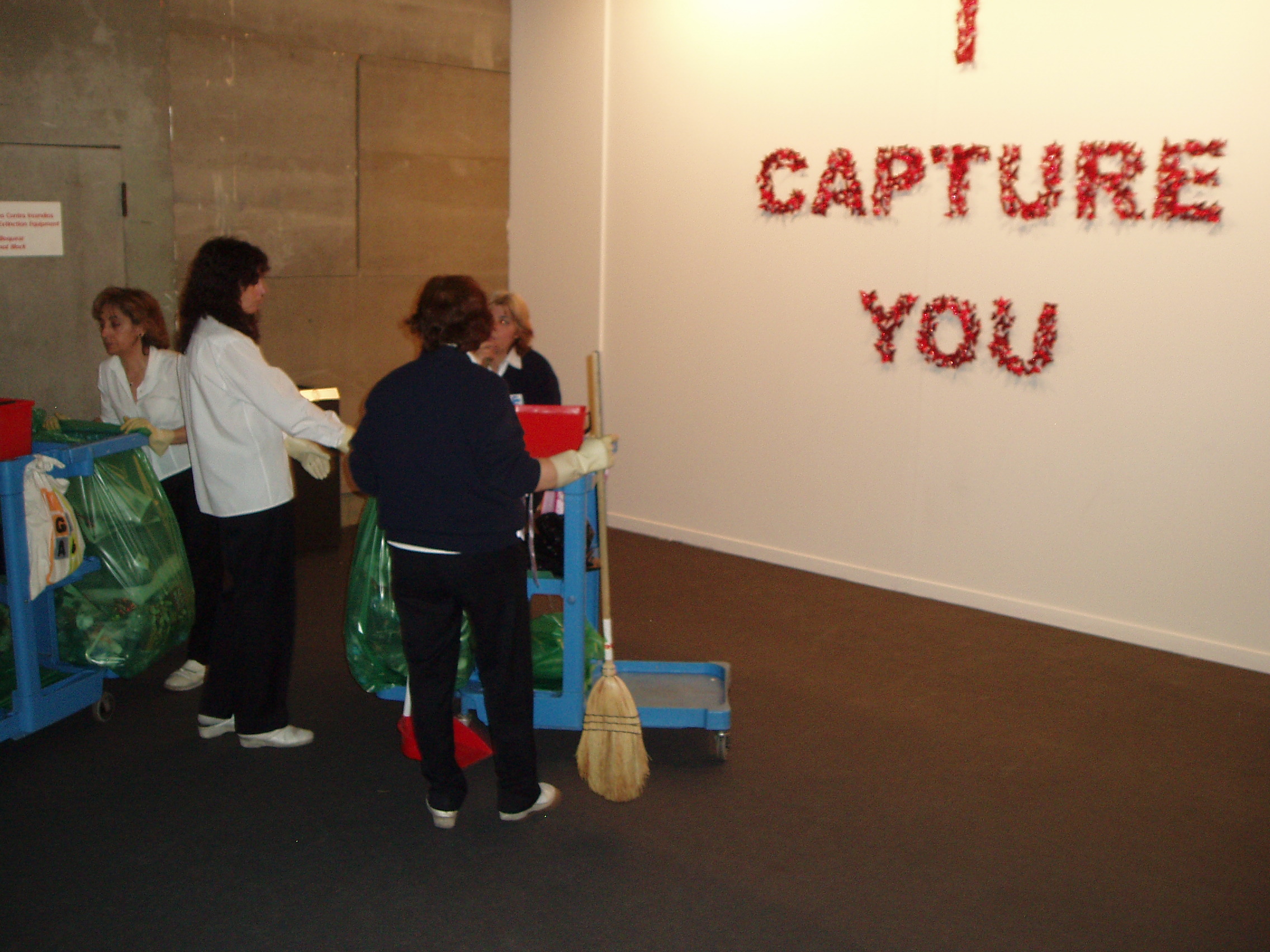Custom Markets. Custom Alternatives: Perspectives on Contemporary Practice in Africa
Blog Notes from ARCO, Madrid by Geert Lovink, February 14, 2009
African art: Are we there (yet)? asks the Princeton art scholar Chika Okeke-Agulu, when he finds himself speaking at the 7th ARCO Contemporary Arts Expert in Madrid. In Africa there are art collectives, and this form of organization has a history. During the 1960s many of them were funded by foreign institutions, or even by the CIA. Still, African art funding mainly depends on foreign cultural agencies. In the past the CIA didn’t care what artists made, but agencies like the British Council, Prins Claus Fund or Goethe Institut only fund what is in their cultural interest. But does it have to this way? Nollywood, the Nigerian film industry is the third largest industry in the world, after Hollywood and Bollywood and proves that local money flows do exist. The reason behind Nollywood was the introduction of video equipment in a time of IMF structural adjustment programs, which made it difficult to pay for expensive Western import films. The special thing about Nollywood is that is has its own economy. Are parallel systems possible, that’s the question. Can African contemporary art take care of itself?

In Nigeria today there is a market for contemporary art but it exists outside of the official global system. It is informal. Why are they not participating in the international networks? The international contemporary arts system has its own code and language. Or, to say it in a different way: the local is not connected to the global. Agulu admits that his analysis does not apply to South Africa. So it Egypt, which even has its own representation at the Venice Bienale. Having said that, Agulu reminds us that in many African countries there are no museums, period. Let alone alternative galeries. “How to make the local part of the global?” is often a question of translation. From the audience came the remark that artists often divide their work between the international network and the local market. Agulu agrees. BTW. the main event for African contemporary arts still the Dakar Biennale, in particular after the failure of Johannesburg. The problem with Cairo Biennale is its national pavillion model a la Venice.
The second speaker I am blogging about is the female artist Senam Okudezeto (Basel, NYC, London, Accra). She is the founder of the NGO “Art in Social Structures” (AISS) that aims to serve the Ghana art community. AISS has a website. The main challenge of AISS is how to share cultural production. Having a critical eye on anything that is culturally produced is what AISS wants to support. AISS is an NGO. It is very important to a legal structure and to transperancy. Art has such a bad reputation as being selfish, disorganized. It is not funded by foreign agents. It is a donor member organization. The money comes from its artist members. The 40 members that often works or (partially live) overseas are providing the money. Foreign large organization such as the UN and the Worldbank ‘bribe’ people with ‘seating money’ for people to come to workshops (so-called TNT). AISS is refusing to participate in such rituals/
The culture in Ghana is rich and dense. But it is private and insular and is mainly in conversation with the immediate environment. Coming from the ARCO world the produced works look pretty messy. It is rapid and disappears. What is necessary is some form of archive. At the moment is there nothing. There is the Umanyo House which serves the tourist market and is largely ignored by ordinary Ghanians. There is no art criticism in Ghana. There is an amazing free press in Ghana but there is no reporting about the arts. The next thing AISS had to do was to organize a one day workshop in 2007 on ‘reporting visual cultures’. The 2009 theme will be architectural heritage. There is a missing archive awareness. There is no long memory. This is why the idea of museums has not quite worked. The culture is about short memory. How can we design museums that defy the climate and the economy? The Internet servers are somewhere else, in the UK or the USA. The physical is ephemeral, just because of the humidity.


